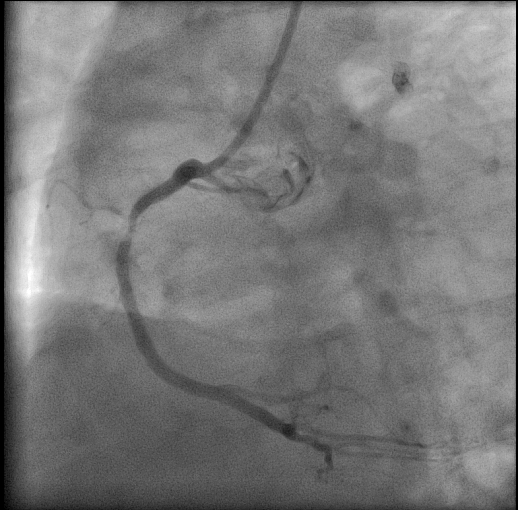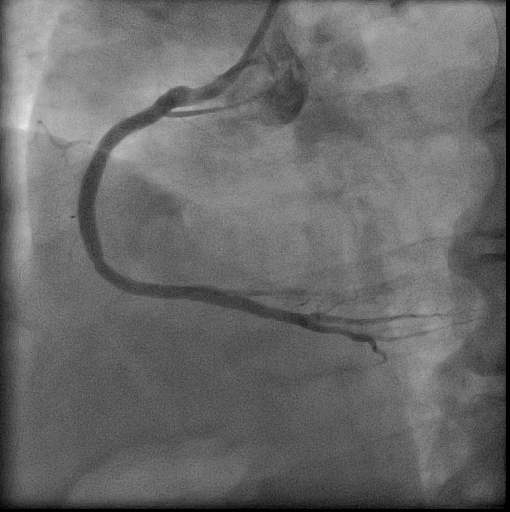[1]
. Invasive compared with non-invasive treatment in unstable coronary-artery disease: FRISC II prospective randomised multicentre study. FRagmin and Fast Revascularisation during InStability in Coronary artery disease Investigators. Lancet (London, England). 1999 Aug 28:354(9180):708-15
[PubMed PMID: 10475181]
Level 1 (high-level) evidence
[2]
Lespérance J, Saltiel J, Petitclerc R, Bourassa MG. Angulated views in the sagittal plane for improved accuracy of cinecoronary angiography. The American journal of roentgenology, radium therapy, and nuclear medicine. 1974 Jul:121(3):565-74
[PubMed PMID: 4846573]
[3]
Sos TA, Lee JG, Levin DC, Baltaxe HA. New lordotic projection for improved visualization of the left coronary artery and its branches. The American journal of roentgenology, radium therapy, and nuclear medicine. 1974 Jul:121(3):575-82
[PubMed PMID: 4846574]
[4]
Aldridge HE, McLoughlin MJ, Taylor KW. Improved diagnosis in coronary cinearteriography with routine use of 110 degrees oblique views and cranial and caudal angulations. Comparison with standard transverse oblique views in 100 patients. The American journal of cardiology. 1975 Oct 6:36(4):468-73
[PubMed PMID: 1190051]
[5]
Levine GN, Bates ER, Blankenship JC, Bailey SR, Bittl JA, Cercek B, Chambers CE, Ellis SG, Guyton RA, Hollenberg SM, Khot UN, Lange RA, Mauri L, Mehran R, Moussa ID, Mukherjee D, Nallamothu BK, Ting HH. 2011 ACCF/AHA/SCAI Guideline for Percutaneous Coronary Intervention: a report of the American College of Cardiology Foundation/American Heart Association Task Force on Practice Guidelines and the Society for Cardiovascular Angiography and Interventions. Circulation. 2011 Dec 6:124(23):e574-651. doi: 10.1161/CIR.0b013e31823ba622. Epub 2011 Nov 7
[PubMed PMID: 22064601]
Level 1 (high-level) evidence
[6]
Elliott LP, Green CE, Rogers WJ, Mantle JA, Papapietro S, Hood WP Jr. The importance of angled right anterior oblique views in improving visualization of the coronary arteries. Part I: Caudocranial view. Radiology. 1982 Mar:142(3):631-6
[PubMed PMID: 7063677]
[7]
Green CE, Elliott LP, Rogers WJ, Mantle JA, Papapietro S, Hood WP Jr. The importance of angled right anterior oblique views in improving visualization of the coronary arteries. Part II: Craniocaudal view. Radiology. 1982 Mar:142(3):637-41
[PubMed PMID: 7063678]
[8]
Hirshfeld JW Jr, Ferrari VA, Bengel FM, Bergersen L, Chambers CE, Einstein AJ, Eisenberg MJ, Fogel MA, Gerber TC, Haines DE, Laskey WK, Limacher MC, Nichols KJ, Pryma DA, Raff GL, Rubin GD, Smith D, Stillman AE, Thomas SA, Tsai TT, Wagner LK, Wann LS. 2018 ACC/HRS/NASCI/SCAI/SCCT Expert Consensus Document on Optimal Use of Ionizing Radiation in Cardiovascular Imaging: Best Practices for Safety and Effectiveness: A Report of the American College of Cardiology Task Force on Expert Consensus Decision Pathways. Journal of the American College of Cardiology. 2018 Jun 19:71(24):e283-e351. doi: 10.1016/j.jacc.2018.02.016. Epub 2018 May 2
[PubMed PMID: 29729877]
Level 3 (low-level) evidence


